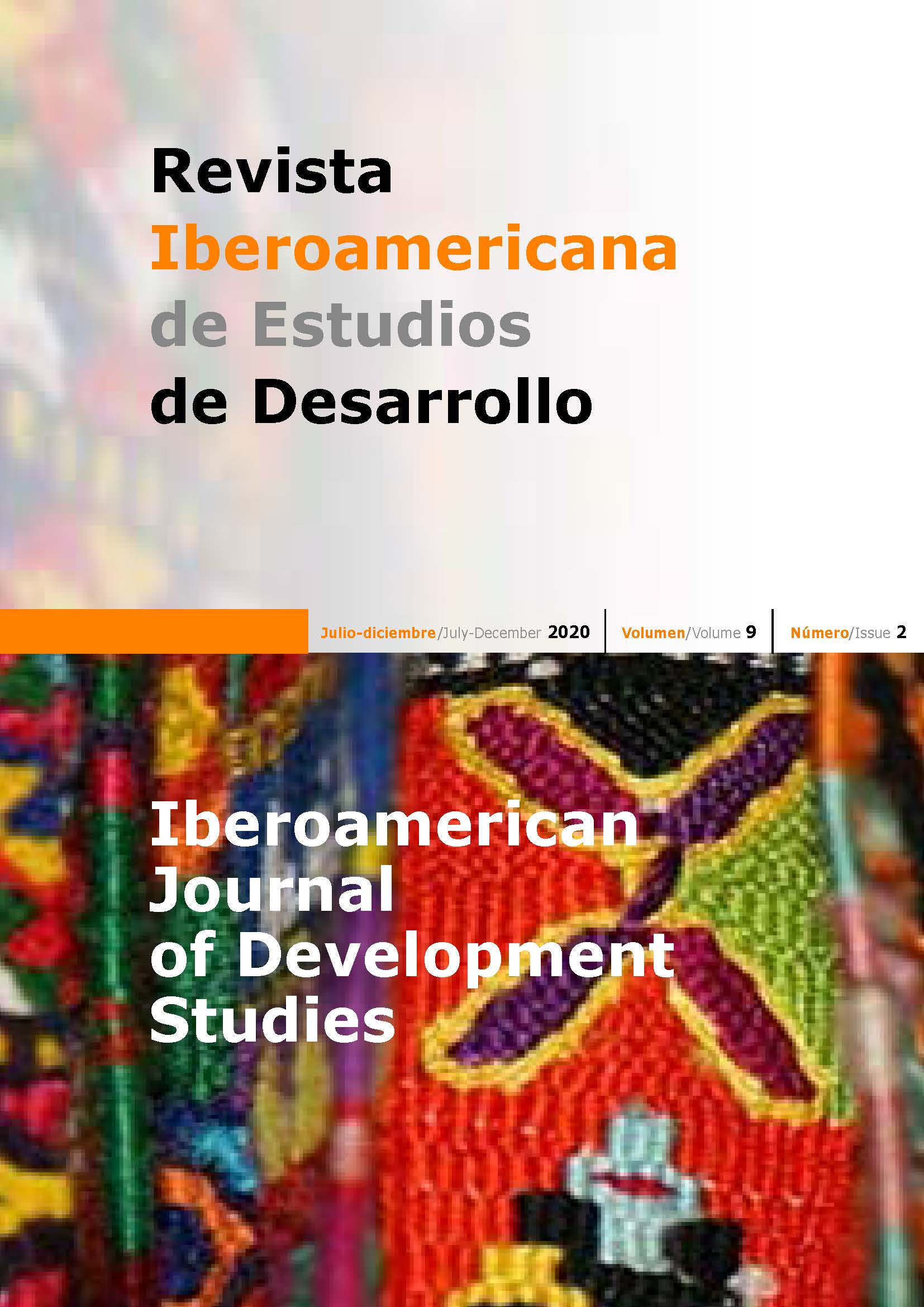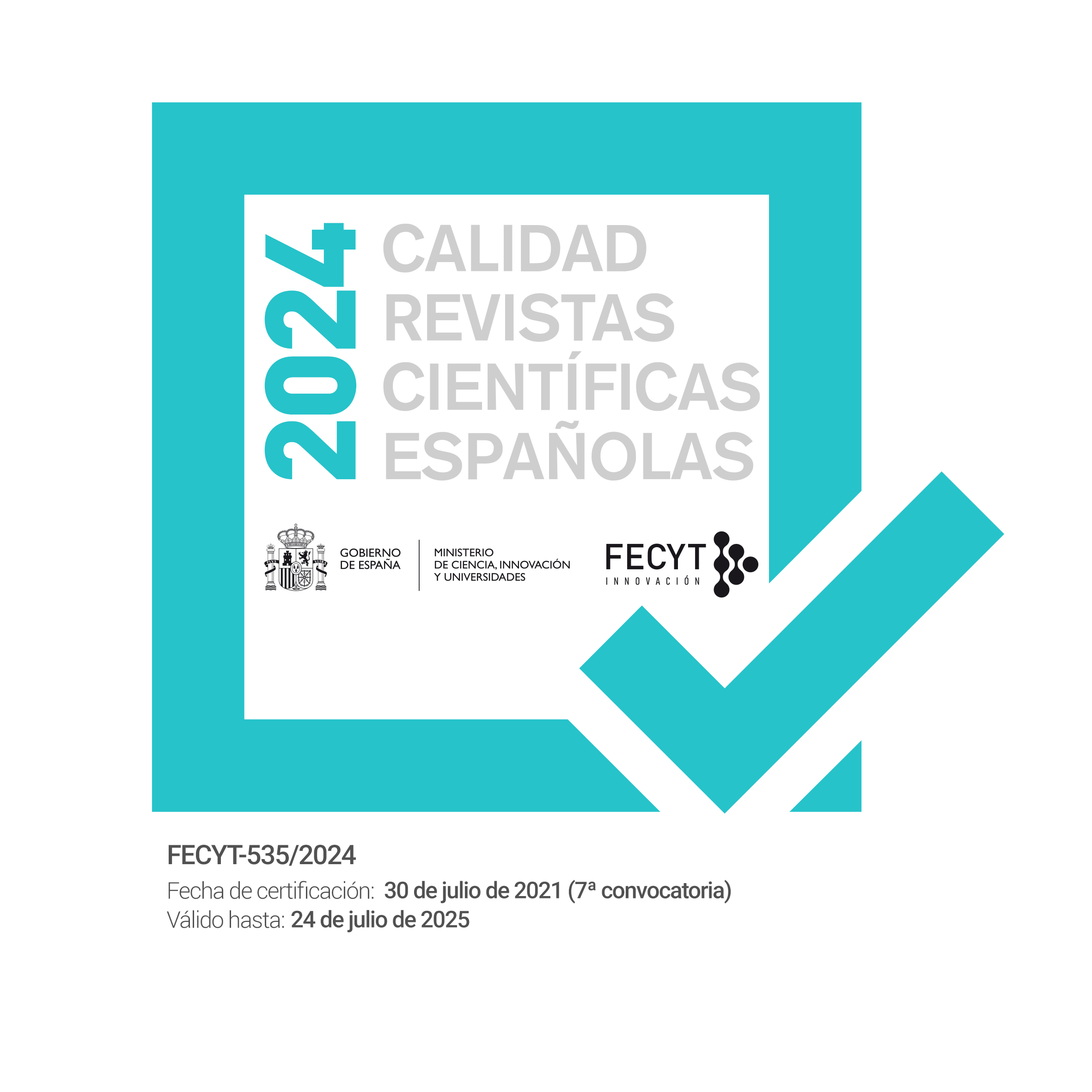The asymmetries of the Dutch disease. Reviewing the Norwegian oil model, 1970-2018
DOI:
https://doi.org/10.26754/ojs_ried/ijds.416Keywords:
Dutch disease, oil and gas, Norway, industrial policyAbstract
In this article, it is traced the presence of the Dutch disease (DD) in the Norwegian economy, which entails the analysis of both its manifestations and links to policies. After systematizing the oil industry’s configuration throughout the period 1970-2018, the impact of the oil sector on the rest of the economy is outlined in conjunction with the Norway’s dependency on the former industry. Specifically, no clear resource reallocation effects of the DD can be observed, although there are certain traces of its spending effects. Moreover, despite the relatively low oil dependency ratios in comparison with other oil producers, the whole of the Norwegian economy shows strong linkages to the oil sector and the trade balance has suffered from increasing deficits related to manufactured products with higher technology content. Based on these results, the faint manifestations of the DD in Norway are diagnosed, which enables us to offer contributions in terms of development policies for oil-rich countries.
Downloads
References
AL-KASIM F (2006). Managing Petroleum Resources: The «Norwegian Model» in a Broad Perspective. Oxford Institute of Energy Studies, Oxford.
AMECO (2019). Database. http://ec.europa.eu/economy_finance/ameco/user/serie/SelectSerie.cfm , acceso 23 de junio de 2019.
AUSTVIK O (2014). The Norwegian Petroleum Experience as an Example? The International Shale Gas and Oil Journal 2(2):18-28.
AUTY R (1993). Sustaining Development in Mineral Economies: The Resource Curse Thesis. Routledge, Londres.
BAUNSGAARD T, VILLAFUERTE M, POPLAWSKI-RIBEIRO M, RICHMOND C (2012). Fiscal Frameworks for Natural Resource Intensive Developing Countries, IMF Staff Discussion Note 12/04. FMI, Washington.
BERREFJORD O, HEUM P (1990). Oil and the Industrial Base of the Norwegian Economy. En: Bergersen H, Sydnes A (eds.). Naive Newcomer or Shrewd Salesman? Norway ‒ A Major Oil and Gas Exporter. The Fridtjof Nansen Institute, Lysaker.
CABALLERO R, LORENZONI G (2007). Persistent Appreciations and Overshooting: A Normative Analysis. Working Paper, n.º 07-13, MIT Departamento de Economía.
CALLEN T, CHERIF R, HASANOV F, HEGAZY A, KHANDELWAL P (2014). Economic Diversification in the GCC: Past, Present, and Future. FMI Discussion-Note SDN/14/12, Washington.
CEPAL (2013). Recursos naturales: situación y tendencias para una agenda de desarrollo regional en América Latina y el Caribe. Naciones Unidas. Santiago de Chile.
CORDEN M (1984). Booming sector and Dutch disease economics: survey and consolidation. Oxford Economic Papers 36(3):359-380.
CORDEN M, NEARY P (1982). Booming Sector and De-Industrialization in a Small Open Economy. The Economic Journal 92(368):825-848.
DAVIS G (1995). Learning to love the Dutch disease: evidence from the mineral economies. World Development 23(10):1765-1779.
EDWARDS S, AOKI M (1983). Oil Export Boom and Dutch Disease: a Dynamic Analysis. Resources and Energy 5(3):219-242.
ERNST AND YOUNG (2016). The Norwegian oilfield services analysis 2015. Oslo.
ETLA, IFF, IUI, IØI (1987). Growth Policies in a Nordic Perspective, Estocolmo.
ETLA, IFF, IUI, IØI (1990). Growth and Integration in a Nordic Perspective, Helsinki.
EUROSTAT (varios años). Database. http://ec.europa.eu/eurostat , acceso 8 de junio de 2019.
FMI (2016). Norway Selected Issues 2016. IMF. Country Report 16/215, Washington.
FMI (2018). Norway Selected Issues 2018. IMF Country Report 18/280, Washington.
HALVORSEN K, STJERNØ S (2008). Work, Oil and Welfare. The Welfare State in Norway. Universitetforlaget, Oslo.
HANSEN T (1999) Companies’ Adaptation to Host-Government Research and Development Requirements: The Foreign Oil Companies Under the Norwegian Technology Agreements. The Research Council of Norway, Oslo.
HIRSCHMAN A (1958). The Strategy of Economic Development. Yale University Press, New Haven.
HOLDEN S (2013). Avoiding the resource curse the case Norway. Energy Policy 63:870-876.
HUDSON M (2011). What Does Norway Get Out of Its Oil Fund, If Not More Strategic Infrastructure Investment? Working Paper Levy Economics Institute Working Paper Collection 657, Nueva York.
HVINDEN E, NORDBØ E (2016). The Fall in Oil Prices and the Labour Market. Norges Bank Economic Commentaries 7/2016, Oslo.
ISMAIL K (2010). The structural manifestation of the «Dutch disease»: the case of oil exporting countries. IMF WP, WP/10/103, Washington, DC.
KAPLINSKY R, MORRIS M, KAPLAN R (2011). A conceptual overview to understand commodities, linkages and industrial development in Africa. Africa Export Import Bank. http://oro.open.ac.uk/30534/2/2E4B0FCA.pdf , acceso 10 de enero de 2019.
KÖRNER K, MASETTI O (2015). GCC in Times of Cheap Oil: An Opportunity for Economic Reform and Diversification. Deutsche Bank Research, Fráncfort.
LARSEN E (2006). Escaping the Resource Curse and the Dutch Disease? Why Norway Caught Up with and Forged ahead of its Neighbours. The American Journal of Economics and Sociology 65(3):605-640.
LERØEN B (2002). Drops of Black Gold: Statoil 1972-2002. Statoil, Stavanger.
MAGUD N, SOSA S (2010). When and Why Worry about Real Exchange Rate Appreciation? The Missing Link between Dutch Disease and Growth. IMF WP 271, Washington.
MAI N (2008). Lessons from the 1990s Scandinavian Banking Crisis. JP Morgan Chase Bank Economic Research, Londres.
MANCINI L (2017). Recursos naturales, tecnología y desarrollo económico: el sector petrolero de Brasil (1998-2015), tesis doctoral. Universidad Complutense de Madrid, Madrid.
MJØSET L, CAPPELEN Å (2011). The Integration of the Norwegian Oil Economy into the World Economy. En: Mjøset L (ed.). The Nordic Varieties of Capitalism. Emerald Group, Bingley.
NELSEN B (1992). Explaining Petroleum Policy in Britain and Norway, 1962‐90. Scandinavian Political Studies 15(4):307-328.
NORDBØ E, STENSLAND N (2015). The Petroleum Sector and the Norwegian Economy. Norges Bank Economic Commentaries 4/2015, Oslo.
NORSKPETROLEUM (2016). Everything you need to know about Norwegian petroleum activities. http://www.norskpetroleum.no/en/ , acceso 9 de enero de 2019.
NORWEGIAN PETROLEUM DIRECTORATE (2016). Fact Pages. http://factpages.npd.no/factpages/ , acceso 9 de enero de 2019.
OCDE (2019). OECD Statistics. https://stats.oecd.org/, acceso 23 de junio de 2019.
ONUDI (2011). Commodities for industrial development: making linkages work. UnidoWP 01/2011. The Open University, Viena.
PNUD (2018). Human Development Indices and Indicators: 2018 Statistical Update. http://hdr.undp.org/en/content/human-development-indices-indicators-2018-statistical-update , acceso 20 de diciembre de 2018.
PRESTMO J, STRØM B, MIDSEM H (2015). Ringvirkninger av petroleumsnæringen i norsk økonomi. SSB Rapporter 2015/8, Oslo.
RAMÍREZ-CENDRERO J, PAZ M (2017). Oil fiscal regimes and national oil companies: a comparison between Pemex and Petrobras. Energy Policy 101:473-483.
RAMÍREZ-CENDRERO J, WIRTH E (2016). Is the Norwegian model exportable to combat Dutch disease? Resources Policy 48:85-96.
RAMÍREZ-CENDRERO J, WIRTH E (2017). Empresas públicas, fondos soberanos y enfermedad holandesa: el caso de Noruega. Revista Brasileira de Planejamento e Desenvolvimento 6(2):180-214.
ROLLINS C (1971). Mineral Development and Economic Growth. En: Rhodes I (ed.). Imperialism and Underdevelopment. Monthly Review Press, Nueva York, pp. 181-203.
ROSS M (1999). The political economy of the resource curse. World Politics 51(2):297-332.
RYGGVIK H (2013). Building a Skilled National Offshore Oil Industry. The Norwegian Experience. NHO/Royal Norwegian Ministry of Foreign Affairs, Oslo.
RYSTAD ENERGY (2018). Internasjonal omsetning fra norske oljeserviceselskaper. Stavanger.
SACHS J, WARNER A (1995). Natural Resource Abundance and Economic Growth. NBER-WP 5398, Cambridge.
SSB (varios años). Statbank. Oslo. http://www.ssb.no/en/statistikkbanken , acceso 8 de junio de 2019.
STATE STATISTICS SERVICE RUSSIA (2015). Main Indicators. https://eng.gks.ru/folder/75924, acceso 20 de diciembre de 2018.
STEIGUM E (2004). Financial Deregulation with a Fixed Echchange Rate: Lessons from Norway’s Boom-Bust Cycle and Banking Crisis. En: Moe T, Solheim J, Vale B. (eds.). The Norwegian Banking Crisis. Norges Bank Occasional Papers 33, Oslo.
TORDO S, ANOUTI Y (2013). Local content policies in the oil and gas sector. Banco Mundial, Washington DC.
TORVIK R (2001). Learning-by-Doing and the Dutch Disease. European Economic Review 45 (2):285-306.
TURNER L (1978). Oil Companies in the International System. George Allen and Unwin, Londres.
VAN DER PLOEG F (2011). Natural resources: curse or blessing? Journal of Economic Literature 49(2):366-420.
VAN WIJNBERGEN S (1984). The «Dutch Disease»: A Disease after All? The Economic Journal 94(373):41-55.
VUORI S (1988). Total Factor Productivity and R&D in Finnish, Swedish and Norwegian Manufacturing Industries, 1963 to 1983. ETLA Discussion Paper 257, Helsinki.
WIRTH E (2017). Los fondos soberanos de inversión y su coordinación con políticas macroeconómicas: el caso de Noruega, 1990-2015, tesis Doctoral. Universidad Complutense de Madrid, Madrid.
WRIGHT G, CZELUSTA J (2002). Exorcizing the Resource Curse: Minerals as a Knowledge Industry, Past and Present. Stanford University Working Paper 25, Stanford.
Downloads
Published
How to Cite
Issue
Section
License
Copyright (c) 2020 Eszter Wirth, Juan M. Ramírez-Cendrero

This work is licensed under a Creative Commons Attribution-NonCommercial-NoDerivatives 4.0 International License.








